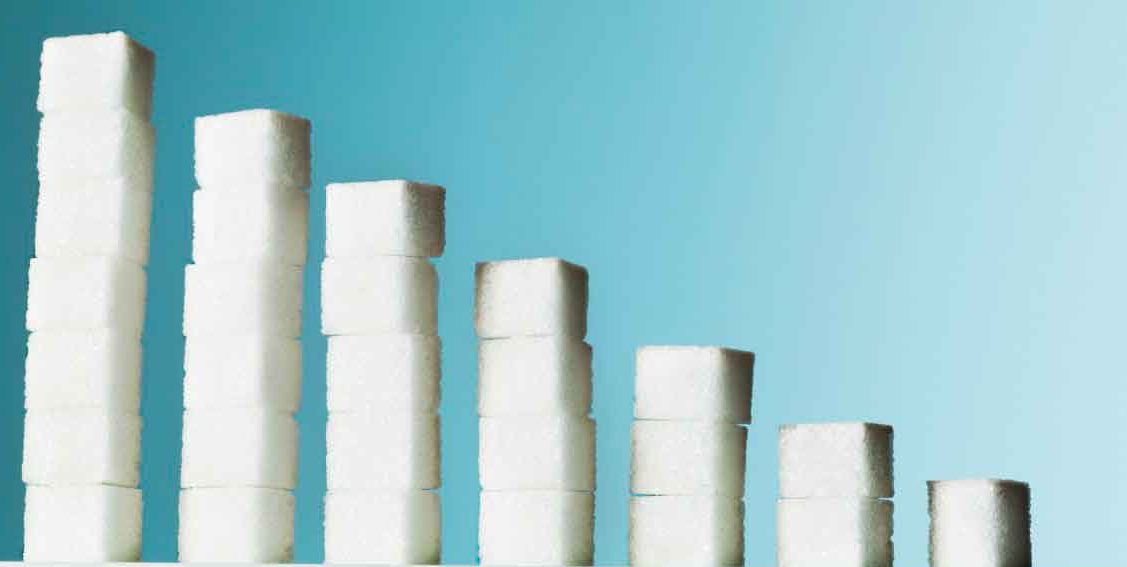How to Cut Back on Sugar

You may not realize the risks associated with eating too much sugar, such as cancer and heart disease. Here's what you should know and how to cut back.
While sweets can cause cavities and weight gain, the extent of other risks associated with eating too much sugar are vast. Sugar is linked with colon and breast cancer, depression, high blood pressure, type 2 diabetes, and kidney and heart disease.
Cutting back is especially important if you experience sugar cravings. Most party drugs increase the chemical dopamine in a particular part of your brain; but foods do, too, although not as much. When rats eat too much sugar every day, their brains show changes similar to when they are dependent on opioids. Other science shows similarities between addictive behavior and binge or compulsive eating.
In short, saying you’re “addicted to sweets” is more accurate than you might think. People may turn to addictive substances to help them endure other problems in their life. According to Jacob Teitelbaum, MD, author of “The Complete Guide to Beating Sugar Addiction,” intense sugar cravings are also often a sign of other health problems, and sugar helps you cope at a steep price.
YOU MIGHT ALSO LIKE: Dietary Guidelines for Americans
How to cut back on sugar at home
- Reduce the amount of sugar you add to your coffee and tea by half, then work down to none. For a substitute sweetener, Teitelbaum recommends stevia, which contains no calories — but it’s much sweeter than sugar, so be sparing.
- Drink water or unsweetened beverages.
- Instead of candy and dessert, eat fruit — but not fruit canned in syrup. If you want to make a morning cereal sweeter, add fruit instead of honey.
Read nutrition labels
Try to stay away from processed foods that list a sweetener in the top three ingredients. Also stay away from foods based on white flour, such as bread and pasta, because they raise your blood sugar quickly, as does white rice.
To lower the amount of added sugar in your diet, be strict about finding it in foods that you may not think of as sweets, including processed foods and restaurant meals. Americans consume an average of 17 teaspoons of sugar a day, according to the Food and Drug Administration.
For example, a half-cup of coleslaw or spaghetti sauce contains two teaspoons of sugar or more. Restaurant food, including Chinese and Thai foods, often contain sugar.
The American Heart Association advises women to eat no more than five teaspoons a day of added sugar. Men should eat no more than nine teaspoons.
Learn to read nutrition labels. Look at the line on the nutrition label for Total Sugars and Added Sugars. Milk, fruit, and other foods contain sugar naturally. Manufactures put the Added Sugars in their products.
Added Sugars go by many names. On a Hostess cupcake label, for example, you will see high-fructose corn syrup, right after the word flour. Yet in sixth place, you’ll see corn syrup. Both are sweeteners added on top of the first ingredient, sugar.
Among others, added sugars include:
- High-fructose corn syrup
- Corn syrup
- Barley malt
- Fruit juice concentrate
- Lactose
- Glucose
- Maltodextrin
- Maltose
- Cane juice
After you’ve reduced your sugar intake
If you’ve been getting too much sugar, you may feel irritable and listless during the first 10 days you cut back, Teitelbaum warns. A sweetener such as stevia can help. You can add ribose powder to any food or drink (5,000 mg a day) to improve your energy. Ribose is about as sweet as sugar.
Within two weeks or so, you can expect to feel a burst of energy and fewer aches and pains. You may still need to deal with other health issues associated with sugar cravings, however, including testosterone dips in middle-aged men, menopause, and Candida yeast overgrowth in your gastrointestinal tract.
Updated:
November 06, 2023
Reviewed By:
Christopher Nystuen, MD, MBA